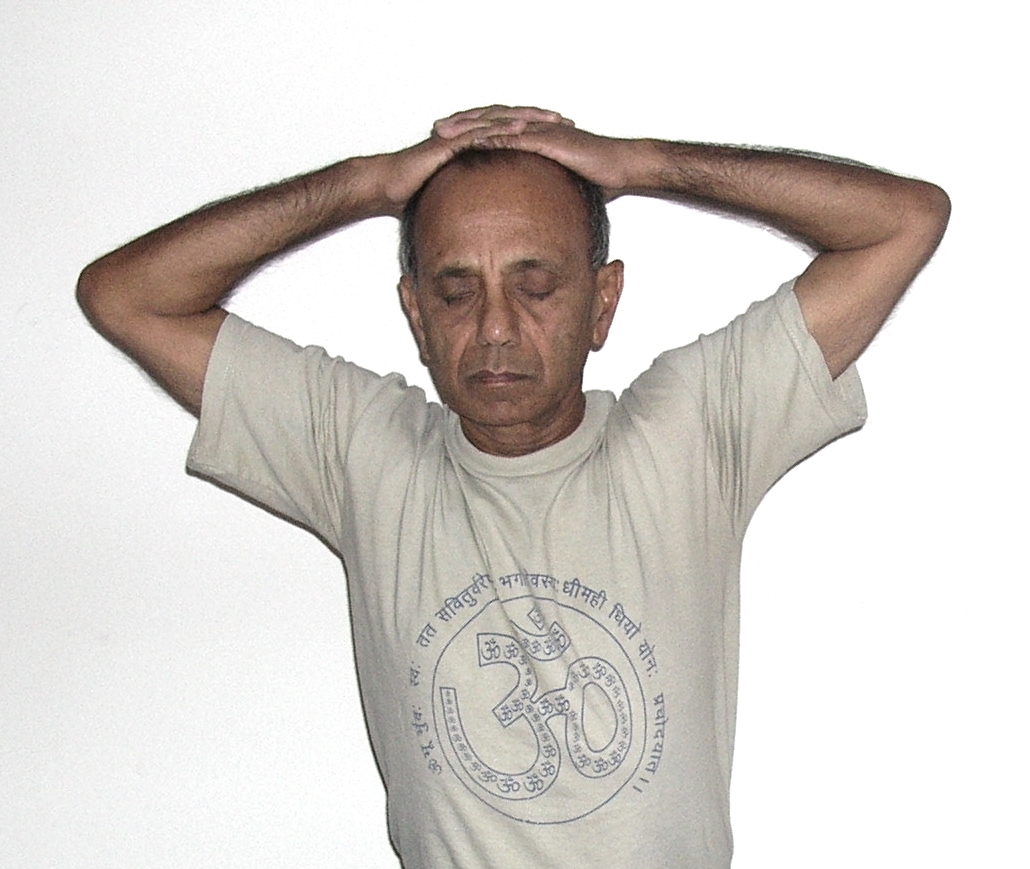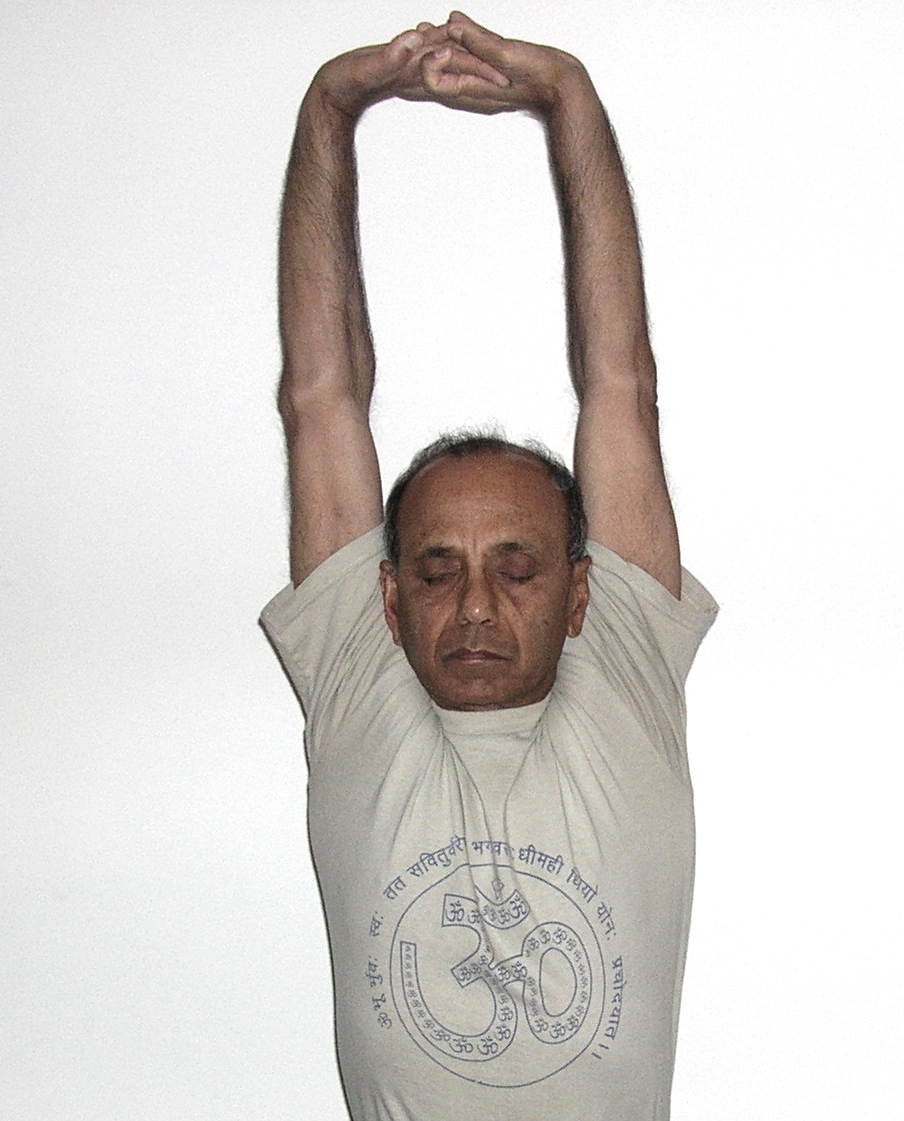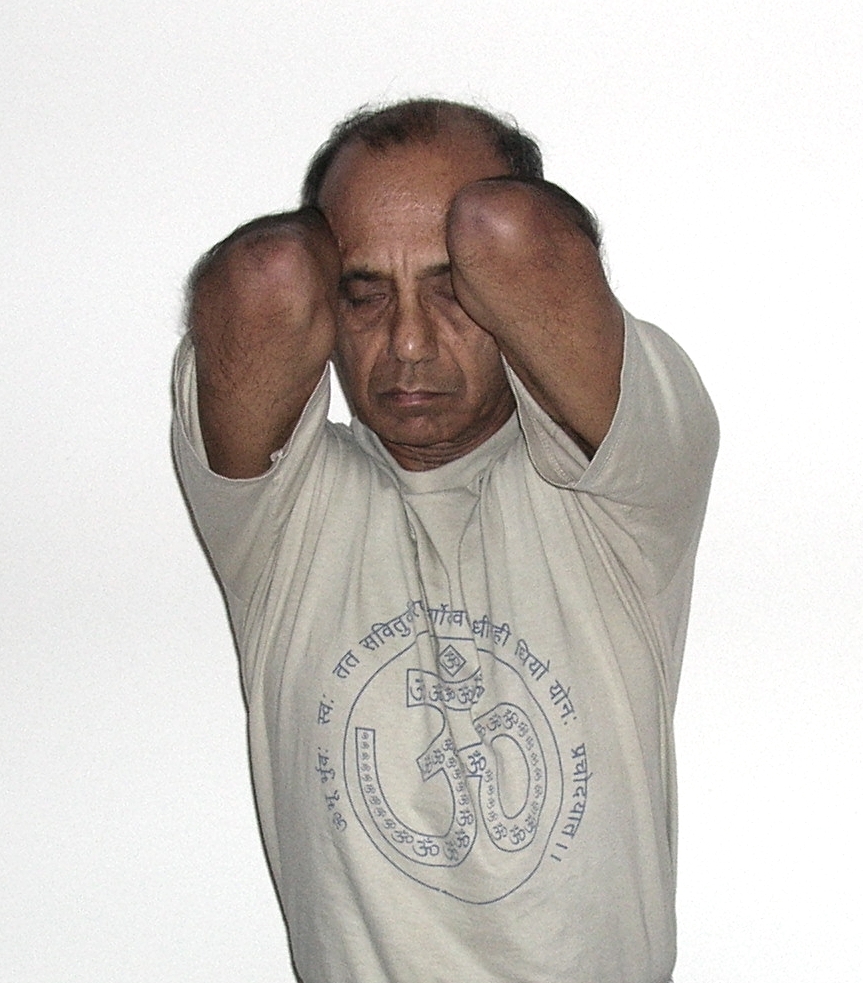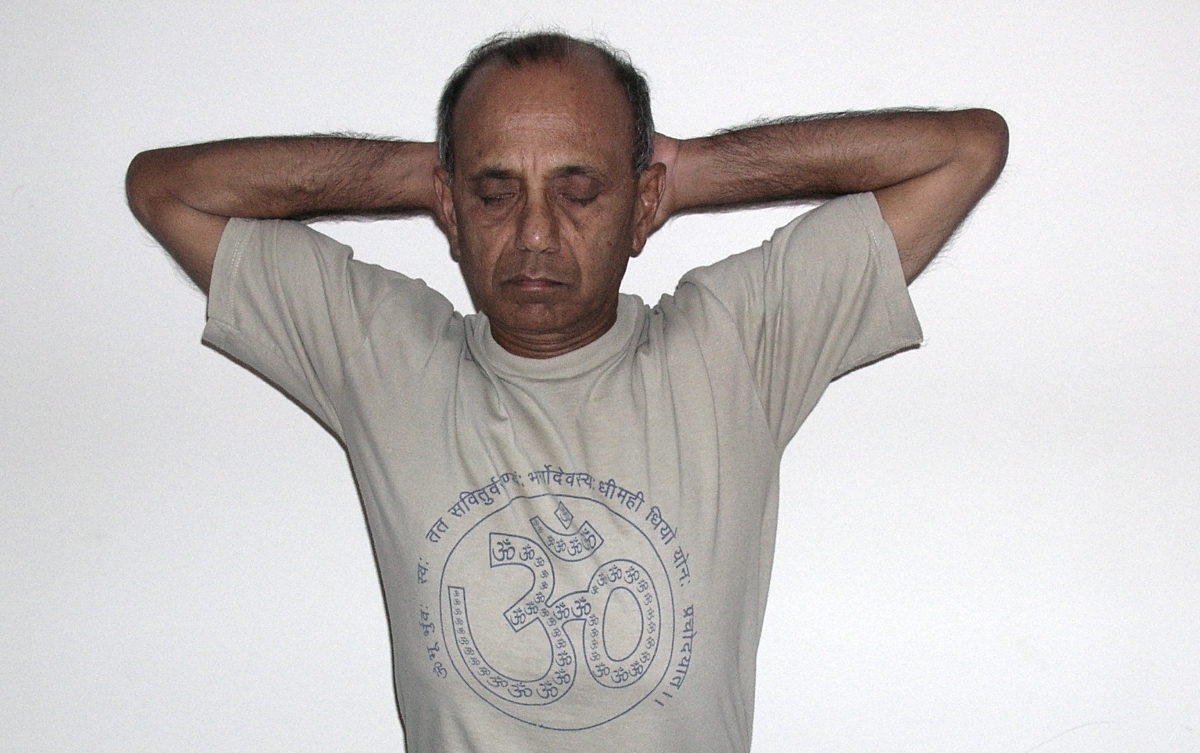The sectional breathing techniques are used as a preparation for the full, deep yogic breathing practice called Ujjayi Pranayama. Our normal breathing which happens involuntarily, 24 hours a day, is quite shallow and is felt only in the upper chest area. Which means that during normal breathing only the upper part of the lungs gets oxygenated. The sectional breathing technique can correct the breathing pattern and also help to increase lung capacity by encouraging fuller breathing into different areas of the lungs. Deep breathing into different parts of the lungs brings in abundant supply of fresh oxygen into these areas. This helps improve the health of the lungs as well as making more oxygenated blood available for each and every cell of the body. Because our attention is focused on different parts of the lungs, our overall awareness of the breathing process is enhanced.
In the following breathing practices, keep the eyes closed so you can completely focus on the depth and quality of breathing as well as on the movement of the arms and shoulders.
For each breathing cycle, use the Ujjayi breathing technique, keeping each breath deep and soft. It is important not to strain the breathing in any way. Try to deepen the breath only so much as not to impact the depth and quality of the subsequent breath. With practice over a period of time, you will be able to prolong the duration of each inhalation and exhalation.
I hope you will enjoy practicing with the video.
Step-by-step

Sectional breathing (upper1)
For practicing these breathing techniques, sit erect in any comfortable seated posture, keeping the spine comfortably tall and vertical.
There are three parts to the sectional breathing:
Upper Chest Breathing
Here, we engage the upper part of the lungs in the deep breathing cycle.

Sectional breathing (upper2)
- Interlock the fingers of the two hands and keep the hands on top of the head, facing down.
- As you begin to inhale, turn the palms up and start lifting the hands up so the arms become vertical. While you are raising the arms up, pull the shoulders up and lift the collar bones.
- Pause for a brief moment at the end of inhalation.
- While exhaling, begin to lower the hands, turning the palms down, and finally rest the palms on the head again. Pause for a brief moment at the end of exhalation before starting the next inhalation.
- Try to synchronize the movement of the arms with the appropriate breath. Maintain deep and soft Ujjayi breaths for each breathing cycle making sure that the breath is not strained in any way.
- Repeat for 5 to 7 rounds of this breathing cycle. At the end of the sequence, relax for a few breaths with natural breathing.
Middle Chest Breathing

Sectional breathing (mid1)
In this breathing, there is a conscious effort to expand the chest and the ribcage. This impacts the middle part of the lungs.
- Bring your hands together, interlock the fingers and place the hands behind your neck.
- Inhale in place and as you exhale, bring the elbows together in front of you, softening the chest. Pause for a brief moment at the end of exhalation before starting the next inhalation.
- As you begin to inhale, pull the elbows apart from each other, expand the chest closing the gap between the shoulder blades. Pause for a brief moment at the end of inhalation.
- Maintain deep and soft Ujjayi breaths for each breathing cycle making sure that the breath is not strained in any way. Try to synchronize the movement of the arms with the appropriate breath.
- In this manner complete 5 to 7 rounds of this breathing cycle. At the end of the sequence, relax for a few breaths with natural breathing.

Sectional breathing (mid2)
Abdominal Breathing
- This is also known as Diaphragmatic Breathing in which we breathe into the lower region of the lungs. In this practice, we try to consciously engage the diagphragm for each inhalation and exhalation.
- Start by keeping one hand on the chest and the other on the abdomen, slightly below the navel.
- Begin deep, slow and continuous inhalation. As you inhale, your awareness is at the lower part of the lungs.
- With a gentle downward pressure of the diaphragm, feel the abdomen filling up like a balloon. At the same time, we want to make sure that there is very little, if any, movement in the chest. Effectively then, the hand on the abdomen should feel the movement of the belly while the hand on the chest should feel minimal movement.
- At the end of inhalation, pause for a brief moment and then start deep, slow, continuous exhalation. As you exhale, lift the diaphragm upward with the result that you can become aware of the cavity building up in your abdomen and the navel moves backwards toward the spine. In this breathing again, more movement is felt by the hand on the belly and little or no movement by the hand on the chest.
- At the end of exhalation, pause for a brief moment and continue with the next cycle of inhalation/exhalation. Maintain deep and soft Ujjayi breaths for each breathing cycle making sure that the breath is not strained in any way. Try 5 to 7 rounds of this breathing cycle.
- At the end of the sequence, relax for a few breaths with natural breathing.
Benefits
- Different areas of the lungs get an abundant supply of fresh oxygen through deep breathing, thus energizing the lungs and improving their health. Due to deep breathing, lung capacity improves.
- As per research reports, when we breathe normally, each incoming breath brings in about 450 ml of air. When we breathe deep ujjayi breaths into different parts of the lungs, each incoming breath can bring in up to 3.5 to 4 liters of air. As a result, each deep breath brings in about 7-8 times more oxygen into the system. Over a longer period of time, the total amount of oxygen may not be different between regular and deep breathing practices. However, when we bring in more oxygen within the duration of one breath, it has tremendous benefits for the system. Every cell of the body gets more energy and vitality. More oxygen into every cell also means that as a result of “gas exchange” more carbon dioxide is brought back by the veins. More CO2 also means that more toxins can be released from the system. Carbon dioxide also impacts the brain in a positive way. Overall, these deep breaths engaging the full lung capacity offer multiple benefits.
- As we know, gravity pulls everything downwards. Some of the blood in the lungs also goes into the lower areas of the lungs due to gravity and stays there. However, our natural breath is very shallow and only makes contact with the blood in the upper part of the lungs. The blood that is in the lower part of the lungs does not receive enough oxygen. When we breathe deep into the lungs, even the stagnant blood there gets oxygenated. When circulated, this additional oxygenated blood also helps energize the body.
- Deep breaths have a very calming effect on the nerves and the mind.
- Deep breathing is now used even by medical professionals to treat patients with hypertension.
Contraindications
None. If you can breathe, you can practice deep sectional breathing and enjoy all the benefits that the practice offers.
Dear Subhashji
Your explanation on Vibhagiya breathing is excellent and well displayed with postures.
Thank you sir,
Regards,
N K Ramani
[…] http://yogawithsubhash.com/2015/09/30/sectional-deep-breathing-vibhagiya-pranayama/ […]
Sir,
Many thanks for the valuable info